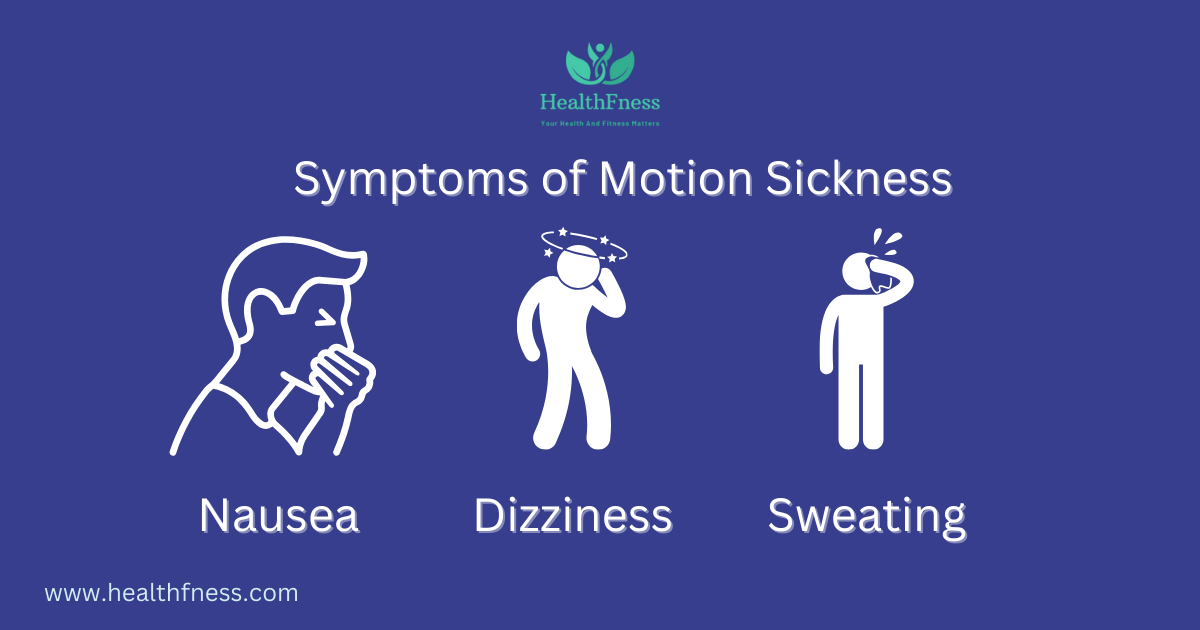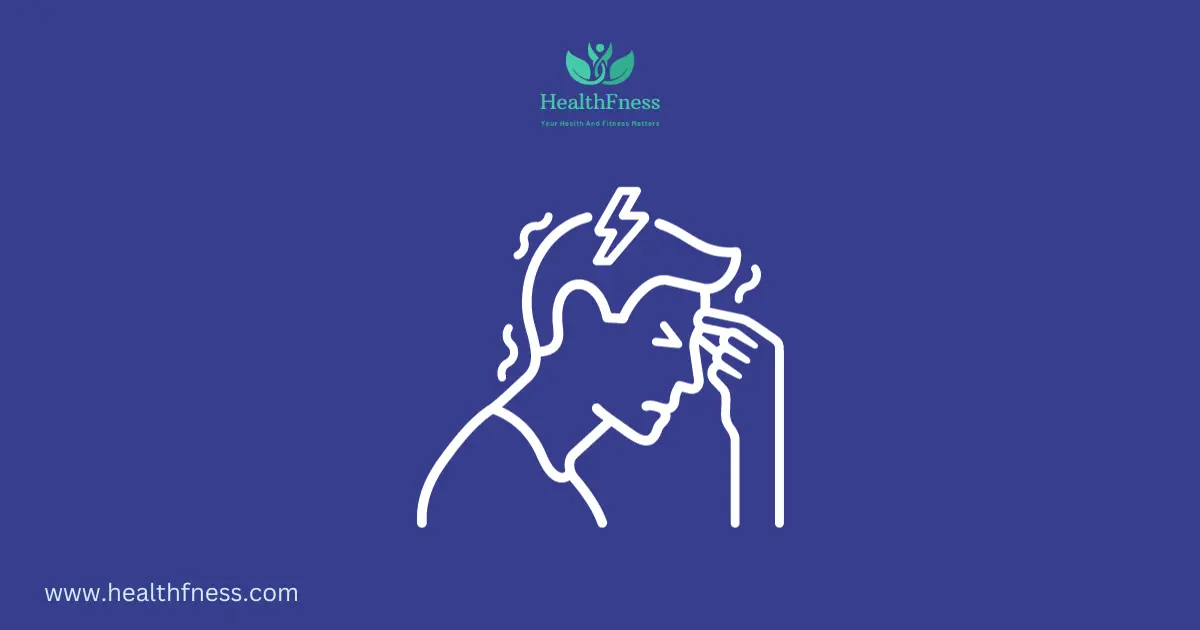Discover our article on “Motion Sickness” to delve into insights about symptoms, risk factors, and effective treatments. Find consolation as you have an advantage over aches with natural treatments and pharmaceutical assistance. This is your remaining forestall for facts and the processes of this disease. Navigate every journey with confidence.
Introduction
Definition and Brief Overview of Motion Sickness
Motion sickness, an often-underestimated ailment, can turn a pleasant journey into a challenging experience. Every man or woman in search of alleviation has to understand its dynamics. It is a circumstance wherein the mind confuses signals approximately motion, inflicting soreness in addition to a whole lot of signs. Whether traveling by car, boat, or plane, the disconnect between what the eyes perceive and what the inner ear senses can result in nausea, dizziness, and other unpleasant sensations.
Understanding the Disease
What is Motion Sickness?
Motion sickness is the body’s response to conflicting sensory signals. As you move, your eyes may see one thing, while your inner ear perceives another. This dissonance can cause the brain’s nausea response, creating a wave of soreness.
Exploring the Complexity of Motion-Induced Discomfort
The discomfort associated with this problem goes beyond a queasy stomach. Symptoms range from mild uneasiness to intense nausea. Gaining powerful control demands a cognizance of such complexity.
Navigating the waves of motion sickness teaches us resilience in adapting to unexpected challenges.
You may also like to read : Motion sickness
Recognizing the Signs
Unmasking the Symptoms of Motion Sickness
Common symptoms include nausea, dizziness, and sweating. Identifying these symptoms at an early stage can help you to treat this issue rapidly and it can enhance your lifestyle.
Identifying the Physical and Emotional Indicators
Motion sickness doesn’t only manifest physically. Emotional indicators like anxiety or irritability can accompany the physical symptoms. Acknowledging these signs can help you to treat the disease quickly.

Risk Factors
Who is at Risk for Motion Sickness?
While anyone can experience this disease, some individuals are more prone to factors like age, genetics, or pre-existing medical conditions. To prevent this disease you must analyze these risks.
Exploring the Individual Variables
Individual variations, such as tolerance levels and overall health, contribute to the likelihood of experiencing this problem.
Peeling Back the Layers
Delving into the Root Causes of Motion Sickness
Understanding the triggers, be it visual stimuli or inner ear imbalances, is key to mitigating this motion illness. Stripping back these layers reveals an analysis of individual structure.
Unraveling the Mechanisms Behind the Discomfort
The body’s response to motion involves a complex set of mechanisms, often resulting in motion illness. Conflicting signals from the eye and the inner ear play an important role.
| Aspect | Risk Factors | Root Causes |
| Susceptibility | Varies among individuals | Discrepancy in Sensory Inputs, Vestibular System Sensitivity |
| Age and Gender | More common in children, females | Neurotransmitter Imbalance, Inner Ear Issues |
| Genetic Predisposition | Family history increases likelihood | Visual-Peripheral Conflict, Central Nervous System Sensitivity |
| Previous Sickness | Past experiences increase risk | Gastrointestinal Factors, Psychophysiological Factors |
| Motion Intensity | More common in turbulent environments | Meal Timing Before Travel, Autonomic Nervous System Responses |
| Reading During Travel | Reading exacerbates symptoms | Medication Interactions, Genetic Factors |
Diagnostic Insights
How Professionals Diagnose Motion Sickness
Medical professionals use a combination of medical history, symptom evaluation, and sometimes diagnostic tests to diagnose this problem.
Understanding the Evaluation Process
From medical examinations to distinctive discussions about travel styles, the diagnostic process gives treasured insights into the character’s experience with motion illness. This knowledge courses tailored remedy plans.
Management and Treatment
Strategies for Effectively Managing Motion Sickness
Motion sickness does not continually call for medicinal drugs. Employing techniques inclusive of managed respiration and solving your gaze at the horizon gives easy but potent solutions.
Just as the sea finds its rhythm, so can we find relief from the discomfort of motion sickness with the right strategies.
Exploring Non-Pharmaceutical Approaches
Natural remedies and behavioral strategies offer alternatives to traditional medications. Incorporating these approaches into the management plan provides a well-rounded solution.
| Aspect | Symptoms | Treatments |
| Definition | Nausea, Dizziness, Sweating, Vomiting | Lifestyle adjustments: controlled breathing, avoiding heavy meals |
| Causes | Discrepancy in visual and vestibular inputs | Natural remedies: ginger, acupressure, peppermint |
| Symptom Duration | Occurs during travel or motion exposure | Non-medicinal approaches: focusing on a fixed point, fresh air |
| Prevalence | Varies among individuals, common in travel | Medicinal aids: antihistamines, scopolamine patches |
| Onset Time | Rapid onset, often at the beginning of travel | Pharmaceutical solutions: prescription and over-the-counter drugs |
| Duration of Relief | May persist throughout the entire journey | Behavioral strategies: distraction techniques, looking at the horizon |
| Aggravating Factors | Reading, excessive head movement | Prevention tactics: proactive measures, lifestyle adjustments |
| Individual Susceptibility | Varies; some more prone than others | Non-medicinal preventative measures: staying hydrated, proper diet |
| Impact on Well-being | Can lead to discomfort, fatigue, and anxiety | Medicinal aids: evaluating the role of medications in treatment |
| Adaptation Over Time | Some individuals develop tolerance with exposure | Lifestyle adjustments: gradually exposing oneself to motion |
You may also like to read : Neuronal Mechanisms and the Treatment of Motion Sickness
Prevention Tactics
Proactive Measures to Ward Off Motion Sickness
Lifestyle adjustments, mind-body practices, and preventive actions can significantly reduce the likelihood of motion sickness. Implementing these methods complements standard nicely-being in the course of the journey.
Lifestyle Adjustments and Mind-Body Practices
From nutritional considerations to mindfulness techniques, making specific way of life adjustments can contribute to a greater comfortable tour. These practices complement different preventive measures.
Non-Medicinal Preventative Measures
Natural Remedies and Behavioral Strategies
Ginger, acupressure, and controlled breathing are among the many natural remedies and behavioral strategies that can effectively prevent motion illness. Understanding these options empowers people to pick what suits them high quality.
Medicinal Aids
The Role of Medications in Motion Sickness Treatment
Various medications, from antihistamines to scopolamine patches, can help manage motion sickness. Understanding the role and potential consequences is essential to making informed decisions.
FAQs
What causes motion sickness?
Motion sickness is because of a discrepancy among visible and vestibular inputs, perplexing the brain and triggering nausea.
What is the best motion sickness medicine?
The effectiveness of motion illness medicinal drugs varies, however commonplace options encompass antihistamines and scopolamine.
What are 3 of the symptoms of motion sickness?
Nausea, dizziness, and sweating are commonplace signs of motion sickness.
Which tablet is used for motion?
Antihistamine tablets are usually used for motion sickness.
Who suffers from motion sickness?
Anyone can get motion sickness, but certain factors like age and genetics can make the condition worse.
How is motion sickness cured?
Motion sickness can be treated in a variety of ways, including lifestyle changes, natural therapies, and medications.
What is the 24-hour motion sickness medicine?
Some motion sickness medications offer 24-hour relief, providing a longer duration of coverage.
Are motion sickness pills safe?
Motion sickness pills can be safe when used as directed, but individuals should be aware of potential side effects.
Is there any treatment for motion sickness?
Treatment options for motion sickness include way of life modifications, herbal treatments, and pharmaceutical interventions.
Where is the pressure point for motion sickness?
The P6 acupressure point, located on the inner wrist, is often targeted to alleviate motion sickness.
Conclusion
In conclusion, it is vital to recognize and manipulate motion sickness to decorate the overall tour. Whether through lifestyle changes, herbal healing procedures or pharmaceutical interventions, a personalized technique is the key to dealing with this not unusual disease. By spotting the signs and symptoms, exploring preventive measures, and considering non-medical and non-pharmacological options, individuals can empower themselves to move speedily, albeit challengingly, however it is triumphed with proper expertise and proactive measures. So, arm yourself with those insights, and make every trip an extra exciting and enjoyable experience.
Learn more about motion illness: Motion Sickness: Current Knowledge and Recent Advance

